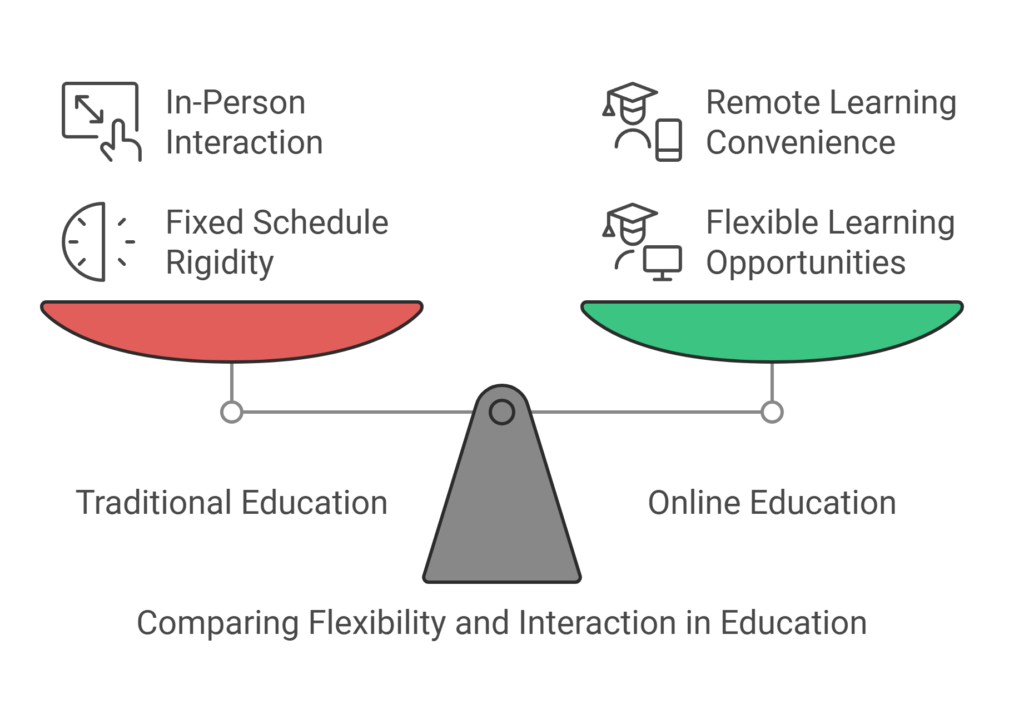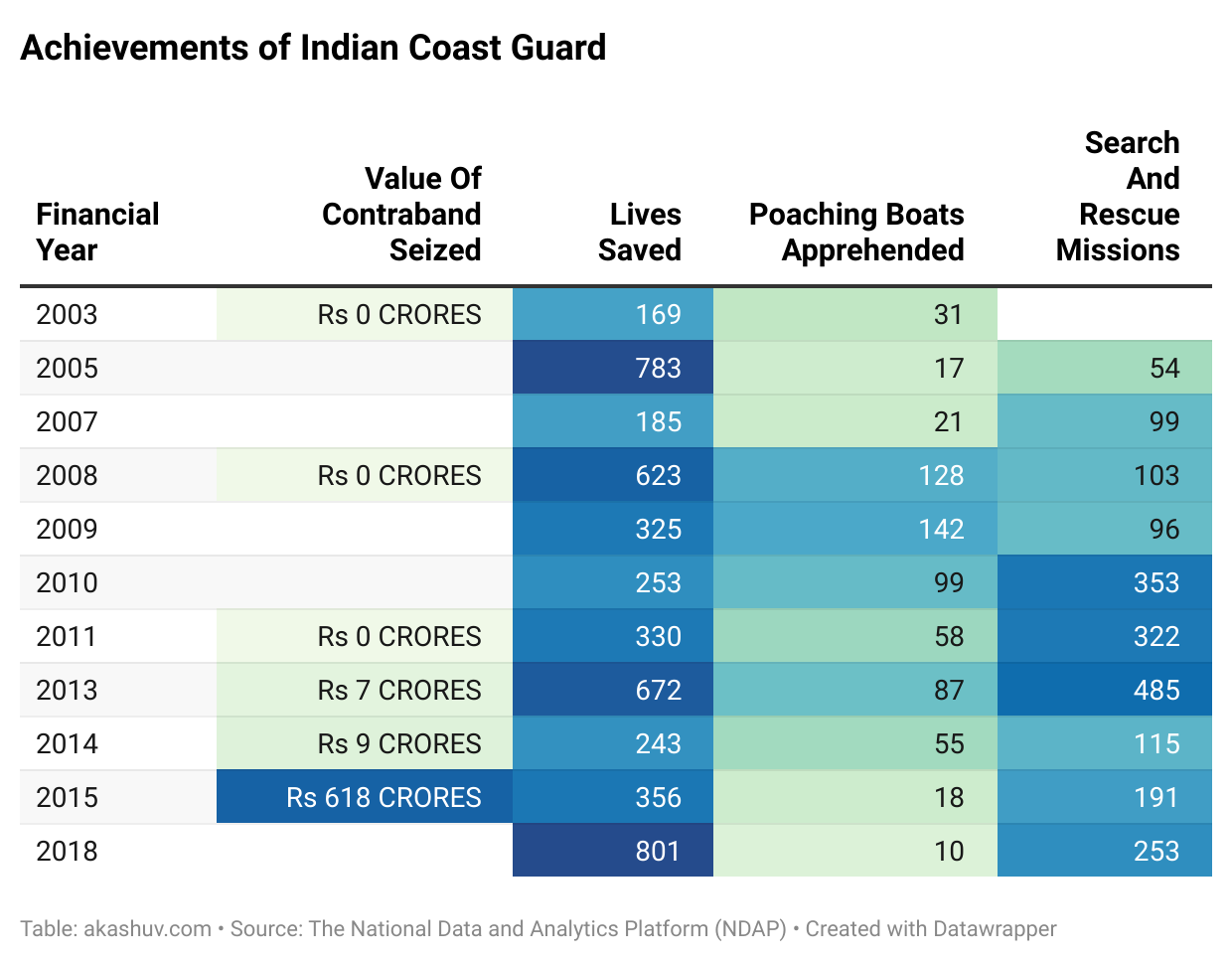Ginger Tea: A Natural Remedy for Period Bloating – An Indian Youth’s Guide
Menstrual cycles can be challenging, with cramps, mood swings, and the infamous bloating making it hard to function at your best.
If you’re an Indian youth juggling studies, work, and social commitments, the added discomfort of period bloating can feel like an unwelcome guest. But what if the solution lies in your kitchen?
According to age-old wisdom—something our mothers have always known—ginger tea is a simple, effective remedy for easing period bloating.
This blog delves into why ginger tea is a go-to solution for menstrual bloating and how it aligns with the lifestyle of Indian youth. Let’s explore how this golden elixir can make your period days a little easier.
Understanding Period Bloating
Period bloating occurs due to hormonal fluctuations, particularly increased levels of estrogen and progesterone. These hormones cause water retention, which leads to a feeling of puffiness or tightness, especially around the abdomen.
While bloating is a normal part of the menstrual cycle, it can be uncomfortable and frustrating.
Why Do Indian Youth Face More Challenges?
As a young Indian, you may already have a hectic lifestyle, balancing academics, work, or other responsibilities. Add to this the cultural expectations and dietary habits that sometimes lean heavily on processed foods, salt, or caffeine—all of which can exacerbate bloating.
Furthermore, in many Indian households, discussing menstruation with male family members is still considered taboo. Some deeply ingrained cultural practices also restrict women during their menstrual cycle, such as not allowing them to enter the kitchen or sleep in a proper bed.
These emotionally distressing practices can, in turn, cause stress, leading to the release of cortisol, a stress hormone that worsens physical discomfort, including bloating.
This is where natural remedies like ginger tea can make a significant difference.
Why Ginger Tea Works Wonders for Period Bloating
1. Anti-inflammatory Properties
Ginger contains powerful anti-inflammatory compounds called gingerols and shogaols. These help reduce the inflammation in the gut, relieving bloating and soothing abdominal discomfort.
2. Promotes Digestive Health
Bloating often stems from digestive issues like slow metabolism or gas buildup. Ginger tea stimulates the digestive enzymes, aiding in faster digestion and reducing gas.
3. Diuretic Effect
Ginger tea has mild diuretic properties that help flush out excess water from the body, reducing water retention and puffiness.
4. Hormonal Balance
Ginger may also play a role in regulating hormones, helping reduce the severity of period symptoms, including bloating, cramps, and mood swings.
5. Warmth and Comfort
A hot cup of ginger tea provides warmth and relaxation, which can ease period discomfort and elevate your mood during challenging days.
Ginger Tea for Period Bloating: Step-by-Step Approach with External Resources
Here’s how you can implement ginger tea as a remedy for period bloating, broken down into actionable steps. Additionally, external links provide deeper insights and credibility.
Step 1: Understand the Science Behind Ginger and Menstrual Health
Before diving into remedies, it’s helpful to understand why ginger is effective for bloating and menstrual discomfort. Research confirms its anti-inflammatory, digestive, and hormone-regulating properties.
External Resources:
Step 2: Gather Ingredients
Head to your kitchen or a local grocery store to gather the following ingredients:
- Fresh ginger root
- Water
- Optional: honey, lemon, or additional spices like cardamom
External Resources:
- BBC Good Food: Why Fresh Ginger Is Better Than Powder
- Times of India: Ginger Benefits in Indian Cooking
Step 3: Prepare Ginger Tea
Follow this quick recipe:
- Boil 2 cups of water in a pan.
- Grate or thinly slice 1-2 inches of fresh ginger.
- Add the ginger to the boiling water and let it simmer for 5-7 minutes.
- Strain the tea into a cup.
- Add a teaspoon of honey or a squeeze of lemon for extra flavor.
External Resources:
Step 4: Drink Responsibly
Consume ginger tea once or twice a day during your menstrual cycle. Avoid drinking excessive amounts, as it can lead to acidity or heartburn in some individuals.
External Resources:
Step 5: Pair Ginger Tea with Lifestyle Adjustments
For maximum relief, complement ginger tea with:
- Hydration: Drink at least 2-3 liters of water daily.
- Diet: Include fiber-rich foods and avoid salty snacks.
- Light Exercise: Try yoga or gentle stretching exercises.
External Resources:
Step 6: Monitor the Results
Keep track of how ginger tea affects your period symptoms over a few cycles. If the bloating significantly reduces, incorporate it into your routine. However, if symptoms persist, consult a healthcare provider.
External Resources:
- WebMD: When to See a Doctor for Menstrual Symptoms
- National Library of Medicine: Gut Health and Hormonal Cycles

Quick Overview of the Steps to Use Ginger Tea for Period Bloating
- Understand the Science Behind Ginger
Ginger’s anti-inflammatory and digestive properties make it effective for easing period bloating. Its ability to regulate hormones also helps reduce discomfort during your menstrual cycle. - Gather the Ingredients
You’ll need fresh ginger root, water, and optional ingredients like honey, lemon, or cardamom for added flavor. - Prepare Ginger Tea
Boil 2 cups of water, add grated or sliced ginger, and let it simmer for 5-7 minutes. Strain into a cup and add honey or lemon if desired. - Drink Responsibly
Drink ginger tea once or twice a day during your period, but avoid overconsumption to prevent acidity or heartburn. - Pair with Lifestyle Adjustments
Stay hydrated, eat fiber-rich foods, and engage in light exercise like yoga to enhance the effectiveness of ginger tea in reducing bloating. - Monitor the Results
Track how your symptoms change over a few cycles. If bloating decreases, continue using ginger tea. If symptoms persist, consult a healthcare provider.
By following these simple steps, you can naturally manage period bloating and stay connected to time-tested, culturally rooted remedies.
When and How Often Should You Drink Ginger Tea?
For best results, drink ginger tea:
- 1-2 times a day during your menstrual cycle, especially when bloating is at its peak.
- First thing in the morning on an empty stomach or in the evening for a calming effect.
Avoid overconsumption, as too much ginger can sometimes cause heartburn or acidity.
The Cultural Connection: Wisdom Passed Down
In Indian households, natural remedies like ginger tea have been trusted for generations. Whether it’s curing a sore throat or soothing an upset stomach, ginger holds a revered place in Ayurvedic medicine. Our mothers and grandmothers often know the value of these age-old practices, even when modern science is just catching up.
As Indian youth, incorporating these traditional remedies into your lifestyle allows you to stay connected to your roots while addressing modern-day health challenges.
Why Ginger Tea Fits the Lifestyle of Indian Youth
- Quick and Easy to Prepare: With minimal ingredients and effort, ginger tea can be made in minutes, making it perfect for busy students or young professionals.
- Affordable and Accessible: Ginger is readily available in most Indian kitchens, making this remedy cost-effective and convenient.
- Customizable Flavor: You can experiment with add-ons like cardamom, cinnamon, or tulsi to suit your taste preferences.
- Holistic Wellness: Beyond bloating, ginger tea helps with cramps, nausea, and even stress—common challenges faced by Indian youth.
Additional Tips to Combat Period Bloating
While ginger tea is an excellent remedy, combining it with a healthy lifestyle can enhance its effects:
- Stay Hydrated: Drink plenty of water to prevent water retention.
- Reduce Salt Intake: Avoid salty snacks, which can worsen bloating.
- Eat Fiber-Rich Foods: Include fruits, vegetables, and whole grains in your diet to promote digestion.
- Exercise Gently: Yoga and light stretches can help alleviate bloating and cramps.
- Limit Caffeine: Replace coffee with herbal teas like ginger, chamomile, or peppermint during your period.
Conclusion: A Cup of Comfort
Ginger tea is more than just a beverage—it’s a cup of comfort, offering relief from period bloating and other menstrual woes. As an Indian youth navigating the complexities of modern life, embracing this traditional remedy can be a game-changer for your overall well-being.
The next time your period brings along bloating, listen to your mom’s advice and brew yourself a warm, soothing cup of ginger tea. It’s a small act of self-care that can make a big difference.
So, why wait? Give ginger tea a try and experience its magical benefits for yourself!
Disclaimer:
The information provided in this blog is intended for general informational purposes only. While ginger tea has been traditionally used in Ayurvedic medicine and has some proven health benefits, it should not be considered a substitute for professional medical advice, diagnosis, or treatment. Always consult with a healthcare provider before making any significant changes to your diet, especially if you have underlying health conditions or are taking medications.
Individual results may vary, and excessive consumption of ginger can lead to side effects such as heartburn or gastrointestinal discomfort. Please consume ginger tea in moderation.
The external resources linked in this article are for reference purposes and do not necessarily reflect the views or recommendations of the author.
-

The Pros and Cons of an Online MBA
The Pros and Cons of an Online MBA: Navigating Your Path to Success
Introduction
Pursuing a Master of Business Administration (MBA) is often seen as a pivotal step for career growth and leadership opportunities. In recent years, online MBA programs have become a popular alternative to traditional, on-campus programs. The flexibility and accessibility of online education are appealing, but it’s crucial to weigh both its benefits and challenges to decide if it aligns with your goals.
In this blog, we’ll dive deep into the advantages and disadvantages of an online MBA to help you make an informed choice.
The Advantages of an Online MBA
1. Flexibility in Learning
One of the standout benefits of an online MBA is its unparalleled flexibility.
- Learn Anywhere, Anytime: Online platforms let you study on your schedule, accommodating work, family, and personal commitments.
- Adaptability for Working Professionals: You can pursue higher education without pausing your career, making it ideal for mid-career professionals.
- Example: Sarah, a marketing executive, earned her MBA online while managing her demanding full-time job.

Pro Tip: Time management tools like Google Calendar or Notion can help you stay on track.
2. Cost-Effectiveness
Online MBA programs are often more affordable than their on-campus counterparts.
- Lower Tuition Fees: Universities save on infrastructure costs, passing some savings to students.
- No Relocation Expenses: Save on housing, commuting, and other associated costs of moving for an MBA.
- Part-Time Learning Options: You can continue earning while studying, reducing financial strain.
Explore affordable programs from top schools in this guide.
3. Diverse Networking Opportunities
Online MBA programs attract students from across the globe, enabling rich cross-cultural exchanges.
- Global Perspective: Collaborate with professionals in diverse industries and geographies.
- Digital Networking Events: Many schools offer online networking sessions and alumni forums to facilitate professional connections.
The Disadvantages of an Online MBA
1. Limited Face-to-Face Interaction
While online platforms provide virtual collaboration tools, they may lack the immediacy of in-person networking.
- Networking Gaps: Building meaningful relationships can be harder in an online setting.
- Employer Perceptions: Certain industries might still favor traditional MBAs for their in-person learning experiences.
2. Self-Discipline Is Key
Online education requires a high degree of motivation and self-discipline.
- Risk of Procrastination: Without regular in-person classes, managing deadlines can be a challenge.
- Independent Learning: The self-paced nature may not suit those who thrive in a structured classroom environment.
Read about effective time management strategies to succeed.
3. Uneven Reputation Among Employers
Some employers still view online MBAs as less rigorous than traditional programs, although this perception is evolving.
- Reputable Institutions Matter: An online MBA from a highly ranked institution like Wharton or MIT Sloan is more likely to be respected.
Challenges and Future Prospects
Current Challenges
- Technological Limitations: Not all students have access to high-speed internet or modern devices, which can hinder their learning experience.
- Isolation: Studying online can feel isolating compared to the camaraderie of an in-person MBA cohort.
The Future of Online MBAs
- Hybrid Learning Models: A combination of online coursework and in-person sessions is emerging as a preferred model for many institutions.
- Increased Accreditation: As online MBAs gain popularity, more programs are pursuing accreditation, enhancing their legitimacy and value.
FAQs
1. Is an online MBA as respected as a traditional MBA?
Yes, if the program is accredited and from a reputable institution, its value is comparable to a traditional MBA.2. What skills do online MBA graduates gain?
Online MBA programs emphasize digital communication, time management, and remote collaboration—skills highly valued in today’s workforce.3. How can I choose the best online MBA program?
Look for factors like accreditation (e.g., AACSB, AMBA), faculty expertise, and strong alumni networks.
Conclusion
An online MBA is a significant investment in your professional development, offering flexibility and cost savings that traditional programs cannot match. However, it comes with challenges like limited networking and self-discipline requirements.
Ultimately, the choice depends on your personal circumstances, career goals, and preferred learning style. If you’re considering an online MBA, start by exploring top-tier programs like Kelley Direct or Kenan-Flagler Online MBA.
For more insights and tips on MBA programs, subscribe to our newsletter or check out our related blogs:
4. Access to Cutting-Edge Technology and Resources
Online MBA programs often incorporate advanced digital tools and platforms, ensuring students are equipped with modern-day business skills.
- Learning Management Systems (LMS): Platforms like Blackboard and Canvas enable seamless delivery of lectures, quizzes, and discussions.
- Tech-Savviness: Students gain expertise in virtual collaboration tools like Slack, Zoom, and Microsoft Teams, which are vital for the modern workforce.
- Specialized Software: Many programs offer access to financial modeling tools, CRM platforms, and data analytics software.
5. Work-Life Balance
Online MBAs offer flexibility, making it easier to balance work, family, and education.
- Part-Time Options: Many online MBA programs allow students to take fewer credits per semester.
- Customizable Schedules: Classes are often recorded, letting students catch up at their convenience.
- Reduced Burnout: By avoiding the need for daily commuting or relocating, students can focus their energy on learning and professional growth.
Exploring Specialized Online MBA Programs
Online MBA programs now cater to niche industries, offering tailored curriculums for specific career paths:
- Healthcare Management: Programs designed for healthcare professionals looking to transition into administrative roles.
- Technology and Innovation: Focused on emerging fields like AI, data science, and digital transformation.
- Sustainability and Social Impact: These programs attract students aiming to lead sustainable business initiatives or work in the nonprofit sector.
Specialization helps students gain expertise in areas most relevant to their career goals, which can make online MBAs even more appealing.
Alumni Networks in Online MBAs
While networking is often seen as a challenge in online MBAs, many programs have built robust alumni networks to bridge the gap:
- Dedicated Platforms: Schools like Wharton and Kelley offer alumni portals to connect graduates globally.
- Virtual Networking Events: Online meetups, webinars, and forums allow students to interact with alumni for mentorship and career advice.
- Job Boards: Exclusive job boards and referral programs are often available to alumni, enhancing career opportunities.
Tip: Attend alumni webinars and career fairs to maximize the value of these networks.
Return on Investment (ROI) of an Online MBA
While the upfront cost of an online MBA may be lower, students should also consider the long-term ROI:
- Higher Earning Potential: Graduates from top programs report significant salary increases post-MBA.
- Career Transitions: Many professionals use online MBAs to pivot into higher-paying industries like consulting, tech, or finance.
- Entrepreneurship Opportunities: Online MBAs provide business knowledge and resources that aspiring entrepreneurs can leverage.
For detailed salary expectations, check out this MBA ROI calculator.
Innovations in Online MBA Learning
Modern online MBA programs are constantly evolving to enhance the learning experience:
- Gamified Learning: Incorporating simulations and business strategy games to engage students.
- AI-Powered Personalization: Programs use AI to provide personalized study plans and feedback.
- Peer Review Systems: Students assess each other’s assignments, fostering collaboration and deeper understanding.
These innovations ensure that online learning remains interactive and effective, even without a physical classroom.
Scholarships and Financial Aid for Online MBAs
Many online MBA programs offer scholarships, grants, or financing options to make education more accessible:
- Merit-Based Scholarships: Awards for academic excellence, leadership skills, or professional achievements.
- Employer Sponsorships: Some companies partially or fully fund employees pursuing MBAs to develop future leaders.
- Payment Plans: Many institutions provide installment plans to ease the financial burden.
Explore financial aid options at Scholarship Universe.
Misconceptions About Online MBAs
Despite growing acceptance, misconceptions still exist about online MBAs:
- “They’re Not as Rigorous”: Many online MBAs follow the same curriculum as traditional programs, ensuring similar academic standards.
- “Limited Career Support”: Most online MBA programs provide robust career counseling, resume workshops, and placement services.
- “Lack of Prestige”: Top-tier schools offering online MBAs, such as Stanford GSB Online Programs, are changing this narrative.
Practical Tips for Choosing an Online MBA
- Research Accreditation: Ensure the program is accredited by agencies like AACSB, AMBA, or EQUIS.
- Compare Curriculum: Look for programs that align with your career goals and offer electives or concentrations in your area of interest.
- Check Alumni Success: Review alumni outcomes to gauge the program’s effectiveness in advancing careers.
- Assess Support Services: Look for programs with strong career counseling, mentorship, and networking support.
Leadership Opportunities in Online MBAs
Online MBA programs often provide opportunities for students to take on leadership roles:
- Virtual Team Projects: Collaborate on case studies or business plans, simulating real-world leadership scenarios.
- Student Clubs: Many programs have virtual clubs or committees, such as entrepreneurship or finance groups, where students can lead initiatives.
- Capstone Projects: Work on real-world problems for companies, showcasing leadership and problem-solving skills.
-

Is an Online MBA Respected by Employers?
Is an Online MBA Respected by Employers?
The rise of online MBA programs has transformed the landscape of business education. Offering flexibility and accessibility, these programs cater to working professionals, career changers, and entrepreneurs. But does an online MBA hold the same weight in the eyes of employers as a traditional, on-campus program? This comprehensive guide explores the factors influencing employer perceptions, the role of accreditation, and how online MBAs can pave the way for career advancement.
Employer Perceptions: A Changing Narrative
The Traditional Viewpoint
Historically, online degrees were met with skepticism due to concerns about quality, rigor, and the lack of face-to-face interaction. Employers often favored candidates with traditional MBA credentials, associating them with stronger academic foundations and networking opportunities.
The Modern Shift
Today, perceptions are evolving as:
- Online education gains legitimacy: Prestigious institutions like Harvard, Wharton, and Stanford now offer online courses or hybrid MBA models.
- Skills trump credentials: Employers increasingly prioritize competencies such as leadership, critical thinking, and problem-solving over the mode of education delivery.
- Flexibility signals capability: Completing an online MBA while balancing professional or personal commitments demonstrates strong time management and self-discipline.
Notable Employer Sentiments
- Leading companies like Amazon, Google, and Deloitte often hire online MBA graduates, emphasizing skills and results over traditional education paths.
- Surveys from organizations like GMAC (Graduate Management Admission Council) indicate growing employer confidence in online MBA graduates.
Industry-Specific Acceptance
Different industries perceive online MBAs in unique ways:
- Technology: Often more accepting of online degrees, valuing technical skills and adaptability over traditional credentials.
- Consulting and Finance: Tend to prefer MBAs from top-tier schools but are warming up to online programs from well-recognized institutions.
- Healthcare and Nonprofits: Show growing openness, especially when the MBA curriculum aligns with sector-specific challenges.
Accreditation: The Gold Standard
Accreditation is a critical factor in determining the credibility of an online MBA. Employers value degrees from programs accredited by recognized bodies, as it assures quality and rigor.
Top Accrediting Bodies
- AACSB (Association to Advance Collegiate Schools of Business): Globally recognized for business education excellence.
- AMBA (Association of MBAs): Focuses on postgraduate management education.
- EQUIS (European Quality Improvement System): Known for its holistic approach to assessing business schools.
Accredited Online MBA Programs
- UNC Kenan-Flagler Business School: A top-tier online MBA with AACSB accreditation.
- Indiana University Kelley School of Business: Renowned for its innovative and interactive online curriculum.
- London School of Economics (LSE): Offers online business courses with EQUIS accreditation.
Why Accreditation Matters
Accreditation ensures that:
- The curriculum meets high academic standards.
- Faculty are experienced and qualified.
- The program provides robust student support services.
- Graduates are competitive in the global job market.
Graduate Outcomes: Proving the Value
Employment Opportunities
Graduates of online MBA programs from reputable institutions often experience outcomes comparable to those of traditional MBAs:
- Placement rates: Over 85% of online MBA graduates secure jobs within three months of graduation (GMAC data).
- Career progression: Many report promotions, salary increases, or successful career transitions post-MBA.
Success Stories
- Case Study: Maria, an online MBA graduate from IE Business School, leveraged her degree to transition from a mid-level marketing role to a global strategy position at a Fortune 500 company.
- Alumni Impact: Graduates from HBS Online have launched successful startups and secured leadership roles in industries like healthcare, technology, and consulting.
Global Reach
Online MBAs allow students to network globally, creating opportunities for international assignments, cross-border collaborations, and access to diverse markets.
Key Advantages of an Online MBA
1. Skills-Oriented Learning
Online programs emphasize practical, industry-relevant skills such as:
- Data-driven decision-making.
- Virtual collaboration and leadership.
- Digital transformation strategies.
2. Global Networking
Online MBAs attract professionals from diverse industries and locations, creating a rich environment for networking and cultural exchange. With virtual events, discussion forums, and online study groups, students can build meaningful relationships that transcend geographical boundaries.
3. Flexibility for Working Professionals
The ability to balance work, study, and personal commitments makes online MBAs appealing, especially for mid-career professionals. Flexible schedules and asynchronous classes enable students to learn at their own pace.
4. Affordability and Cost-Efficiency
Online MBAs often have lower tuition fees than traditional programs. Additionally, students save on commuting, relocation, and living expenses. Many programs also offer scholarships, grants, or employer sponsorships to ease financial burdens.
5. Lifelong Learning Opportunities
The modular nature of online MBAs often includes access to updates, refresher courses, and alumni resources, allowing graduates to stay relevant in a rapidly changing business environment.
Challenges and How to Overcome Them
Common Concerns
- Perceived Lack of Rigor: Employers may still question the depth of engagement and peer interaction in online programs.
- Networking Limitations: Online formats may not offer the same level of in-person networking opportunities as traditional MBAs.
- Self-Motivation Requirements: The flexibility of online MBAs demands a high level of self-discipline, which can be challenging for some learners.
Solutions
- Opt for Hybrid Models: Programs that combine online coursework with periodic on-campus residencies address networking gaps.
- Leverage Technology: Participate in webinars, virtual conferences, and alumni meetups to expand your professional network.
- Showcase Outcomes: Highlight specific projects, internships, or leadership roles you’ve undertaken during your MBA.
- Time Management Skills: Use productivity tools and create a structured study schedule to manage responsibilities effectively.
FAQs About Online MBAs
Q1. Do employers view online MBAs as less credible than traditional MBAs?
- If the program is accredited and from a well-known institution, most employers view online MBAs as credible. Focus on showcasing the skills and knowledge you’ve gained.
Q2. Will an online MBA limit my career options?
- No, provided the degree is from a reputable institution. Many graduates of online MBAs have successfully advanced their careers or transitioned into new fields.
Q3. How can I ensure my online MBA is respected?
- Choose programs with recognized accreditation, engage actively with alumni networks, and demonstrate your ability to apply what you’ve learned in real-world scenarios.
Q4. Can I network effectively in an online MBA program?
- Yes, through virtual meetups, discussion forums, and alumni events. Many programs also organize regional in-person events for networking.
Q5. Do online MBAs offer the same career services as traditional MBAs?
- Many top online MBA programs provide robust career support, including job placement assistance, mentorship programs, and resume workshops.
Conclusion: Are Online MBAs Respected by Employers?
Yes, online MBAs are increasingly respected by employers—especially when they come from accredited institutions with a strong reputation. The key to maximizing the value of your degree lies in choosing the right program, demonstrating the skills you’ve acquired, and leveraging networking opportunities.
By focusing on accredited programs, actively engaging with peers and faculty, and showcasing your achievements, you can ensure your online MBA not only meets but exceeds employer expectations.
Related Resources
- Top Accredited Online MBA Programs
- Career Tips for MBA Graduates
- How to Balance Work and an Online MBA
Call-to-Action: Ready to take the next step? Explore our detailed guide on choosing the best online MBA program to match your career goals!
-

The Future of Business Education is Online
The Future of Business Education is OnlineIntroduction
The paradigm of education has shifted dramatically over the past decade, with online learning becoming increasingly central to how we acquire knowledge and skills. For business education, this shift is not just about convenience; it’s about necessity. As businesses globalize and operate in a digital-first world, the competencies required to thrive are evolving.
This blog post explores the trends in online education, the pivotal role of technology in learning, how it enhances global accessibility, and what future job skills are in demand due to these changes.
The Evolution of Online Business Education
The advent of online education has revolutionized the way business professionals acquire knowledge and skills. By blending technology, accessibility, and innovation, online platforms have transformed learning from a static classroom model to a dynamic, global, and personalized experience. Here’s an in-depth exploration of this ongoing transformation and what it means for future learners.
The Shift to Digital Platforms
The rise of online learning platforms has democratized education, making high-quality business courses available at the click of a button. Platforms such as Coursera, edX, and LinkedIn Learning have emerged as leaders in this space, offering courses that cater to both foundational skills and advanced business strategies.
- Coursera: Partnering with over 200 top universities, including Stanford and INSEAD, Coursera offers comprehensive programs ranging from beginner-level courses to professional certificates and full-fledged online degrees.
- edX: Known for its diverse course offerings, edX provides access to programs from prestigious institutions such as MIT and Harvard, helping students enhance their expertise in areas like finance, marketing, and entrepreneurship.
- LinkedIn Learning: Focusing on professional development, this platform provides micro-courses on topics like leadership, project management, and digital marketing, all integrated with LinkedIn profiles for career visibility.
These platforms have successfully bridged the gap between industry needs and academic learning by offering relevant, flexible, and affordable education.
Technology as a Learning Catalyst
Technology has been the driving force behind the evolution of online business education. Emerging tools and innovations are reshaping how learners interact with content, instructors, and peers.
Virtual Reality (VR) and Augmented Reality (AR)
Immersive technologies like VR and AR allow students to experience real-world business environments without leaving their homes:
- VR Business Simulations: Walk through a virtual factory to understand operations management or participate in a mock boardroom meeting to develop decision-making skills.
- AR Enhancements: Use AR overlays to analyze marketing data or financial reports interactively.
Artificial Intelligence (AI)
AI-powered tools are revolutionizing the learning experience by tailoring it to individual needs:
- Personalized Learning Paths: Platforms like Knewton adapt course content based on a student’s progress, ensuring they focus on areas needing improvement.
- AI Tutors: Chatbots and AI assistants provide instant support, answering queries and offering additional resources.
Mobile Learning
Smartphones have made education more portable, enabling learners to engage in “micro-learning” sessions during commutes or breaks. Apps like Blinkist condense business books into short summaries, while others like Udemy offer bite-sized lessons on-demand.
Global Accessibility in Online Education
Online education has dismantled traditional barriers, making learning opportunities available to a global audience.
Breaking Down Barriers
- Geographical Accessibility: Students in rural areas or developing countries can now access the same resources as those in urban centers.
- Cost-Effectiveness: Online courses often cost a fraction of traditional degrees, significantly reducing financial barriers.
- Flexibility: Working professionals can balance learning with their jobs, thanks to asynchronous schedules and part-time options.
Case Study: The Impact of MOOCs
Massive Open Online Courses (MOOCs) have played a pivotal role in scaling education globally:
- Khan Academy: Provides free, high-quality education to millions of learners worldwide.
- FutureLearn: Partners with institutions like the University of Pennsylvania to deliver business courses tailored for diverse audiences.
Skills for the Digital Economy
As businesses embrace digital transformation, the skills required to succeed are evolving. Online platforms are equipping learners with these in-demand competencies.
Essential Skills
- Digital Literacy: Courses on tools like Excel, Tableau, and Google Analytics are fundamental for data-driven decision-making.
- Soft Skills: Platforms like Skillshare emphasize creativity, communication, and leadership through practical, project-based approaches.
- Technical Expertise: Specialized programs on AI, blockchain, and cybersecurity from platforms like Udacity address the growing demand for tech-savvy professionals.
Challenges and Future Prospects
Challenges
- Quality Assurance: With the proliferation of online programs, ensuring consistent quality remains a concern. Accreditation bodies like AACSB and peer reviews are crucial for maintaining standards.
- Engagement: Online learning lacks the physical presence of peers and instructors, making student engagement challenging. Solutions include gamified content, interactive videos, and discussion forums.
- Digital Divide: Not all learners have access to reliable technology or the internet. Initiatives like One Laptop per Child aim to bridge this gap.
Future Prospects
- Advanced Technologies: Expect AI-driven personalized learning paths and more sophisticated AR/VR applications for experiential learning.
- Micro-Credentials: Digital badges, certifications, and nanodegrees are becoming widely recognized, offering flexible career advancement options.
- Collaborative Learning: Peer-to-peer interactions, facilitated by advanced platforms, will enhance teamwork and global networking.
FAQs
1. How does online education compare to traditional classroom learning? Online education offers unparalleled flexibility and access to diverse resources. However, it may lack the direct interaction and networking opportunities of traditional settings.
2. Are online business degrees as respected as traditional ones? Yes, especially when accredited by recognized bodies like AACSB. The emphasis is shifting towards the skills acquired rather than the mode of learning.
3. What are the key skills needed for future business leaders? Adaptability, digital proficiency, critical thinking, and emotional intelligence are essential for navigating the complexities of modern business environments.
Conclusion
The evolution of online business education signifies a paradigm shift in how we prepare for the future. With technology driving innovation, these platforms are making learning more accessible, relevant, and impactful. For aspiring business leaders, embracing online education is not just an option—it’s a necessity for staying competitive in a rapidly changing world.
Call to Action: Ready to explore the world of online learning? Subscribe to our newsletter for updates on the latest trends, or dive into our comprehensive guide on the best online business courses for your career growth!











Leave a Reply